Changing Landscapes

Changing Landscapes is a two year research network which brings together academic research on our personal connection to the landscapes which surround us. Many of us, particularly those who live in the countryside, have our identities shaped by the landscapes we live in or visit.
The network held a series of symposia at The MERL and to mark the conclusion of these talks, we’re presenting a set of short landscape biographies composed by both academics and MERL staff. These ‘biographies’ take two forms, firstly with network academics summarising their research, and then MERL staff giving personal reflections from their own lives and experiences.

Bemerton water meadows
Written by Jeremy Burchardt.
This photo shows a girl named Alison sitting on a plank bridge over a stream in Bemerton water meadows near Salisbury. It was taken in May 1941. She is reading a comic, apparently subverting the pastoral expectations the idyllic scene raises, yet she and her half-sister Jane named this stream ‘The River of Life’, thus also calling into question anti-pastoral academic critiques that insist the ‘reality’ of rural life was pervaded with conflict and hardship. The multi-layered complexity of landscape experience, and perhaps especially children’s landscape experience, evades our attempts to impose simplistic categories on it.
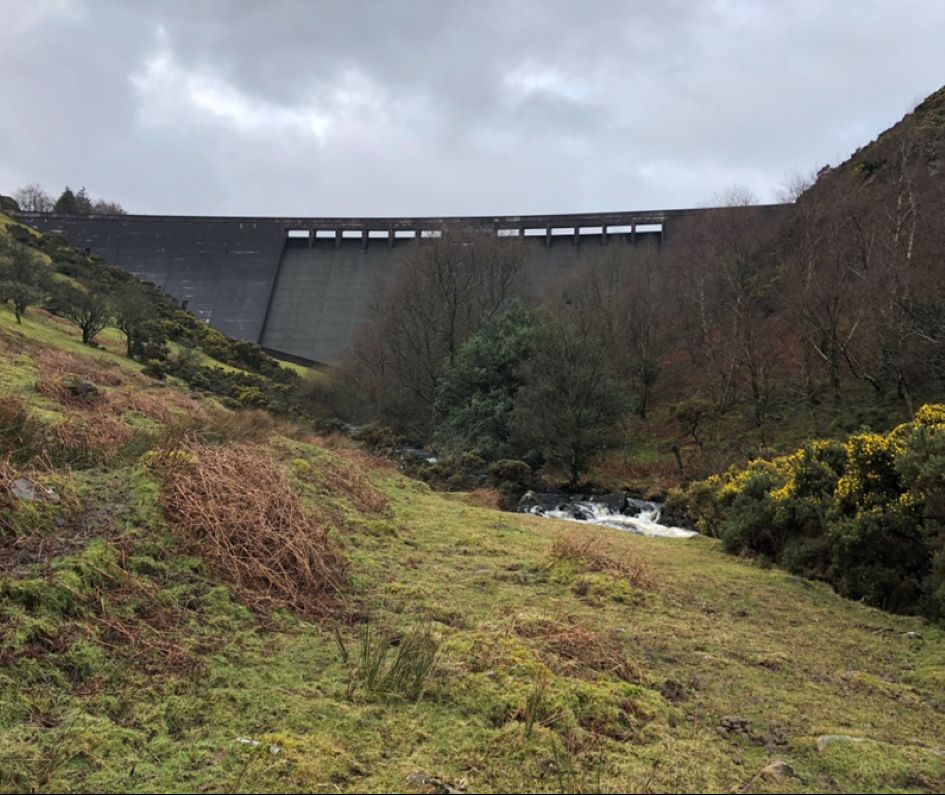
The Meldon Dam
Written by Matthew Kelly.
As domestic and industrial demands for water increased in the post-war decades, statutory ‘water undertakers’ looked to Britain’s uplands for river valleys to dam. The North Devon Water Board fastened onto the Meldon Valley on the edge of the northern quarter of Dartmoor National Park, through which busily flowed the Okemont. A terrific planning dispute ensued, pitting the ‘amenity societies’ led by the Dartmoor Preservation Association, and its tenacious chair Lady Sylvia Sayer, against the board and many local interests. The minister eventually found in favour of the board, and for fifty years the hard modernist lines of this sinister concrete dam have, in the words of Sayer, ‘denatured’ the river and its surroundings.
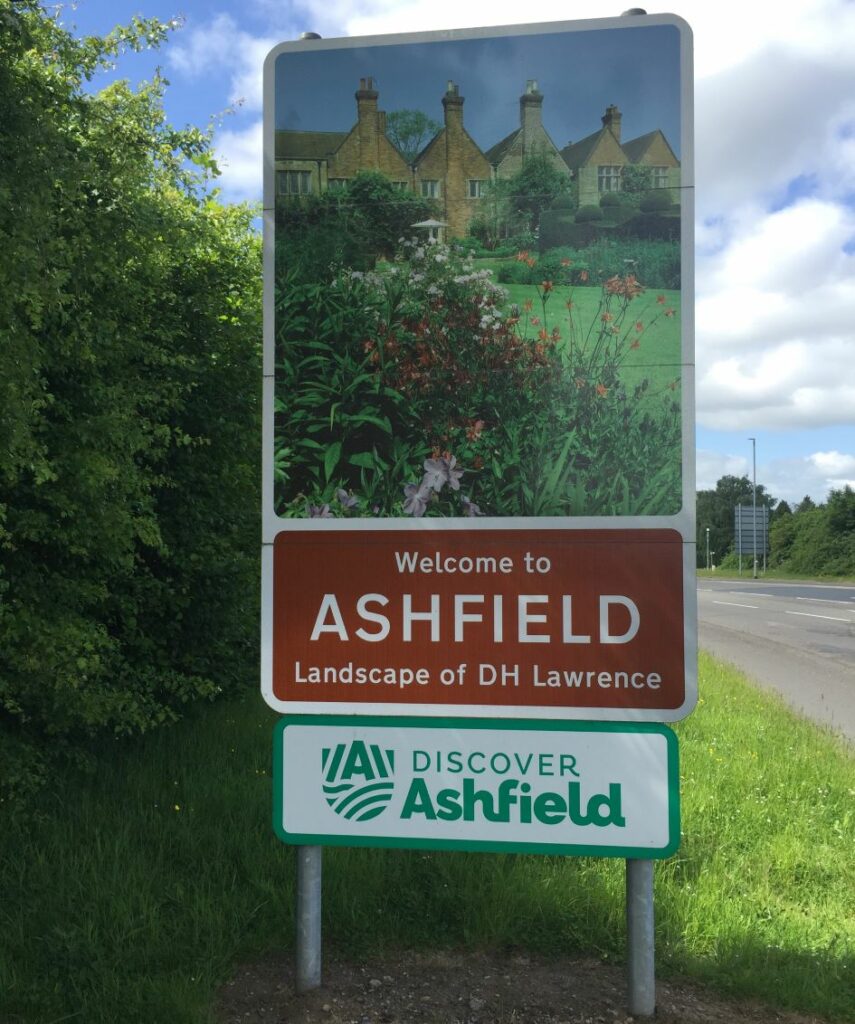
Ashfield
Written by Clare Griffiths.
A writer’s sense of place can become our route into appreciating particular landscapes, providing opportunities for local authorities and businesses to brand their part of the world and appeal to visitors. D. H. Lawrence’s work seems to positively invite such topographical connections, drawing repeatedly on specific locations and descriptions of the countryside in his novels about the tracts of Nottinghamshire and Derbyshire where he grew up, recalled as ‘the country of my heart’. This roadside sign illustrates the attraction of these associations in promoting the modern identity of one local borough: an area so powerfully shaped by the growth and collapse of the mining industry, here to be discovered (rediscovered?) as the ‘landscape of D. H. Lawrence’.

Sudbury pillbox
Written by Paul Readman.
Robert Arbib was a Staff Sergeant in the 820th Engineer Aviation Battalion of the US Air force. He arrived in Britain in summer 1942, at the height of the war. By training he was a camouflage technician; his job was to conceal airfields in the Suffolk countryside. Yet he was dismayed by the destruction wrought by his unit’s bulldozers, pickaxes and dynamite; and indeed by the despoilation caused by the military installations themselves, once constructed.
One day, he took time off, relaxing by the River Stour, near Sudbury. He felt at peace, distant from the war; detached even from the twentieth century itself. But then he spotted a concrete pillbox, which he described in appearance as ‘an overgrown mushroom’. It seemed an affront to the landscape. ‘Perhaps some day soon’, he reflected, ‘they will uproot those ugly mushrooms, spaced almost every hundred yards down the river valley all the way to the sea, hiding behind knolls, lurking in the underbrush, under the willows. Perhaps they will be left there, to gather moss and then grass and then to be split by the roots of trees, as relics of an age, a strange, incongruous footnote to Suffolk history’. Arbib’s words proved prescient.
About 28,000 pillboxes were constructed in Britain during the Second World War. Where not demolished, the vast majority were left to decay: today only about two thousand—if that—remain in an unruined state. While they are increasingly seen as worth preserving, they remain incompletely integrated into mainstream understandings of national heritage. Concrete does not provide picturesque ruination.
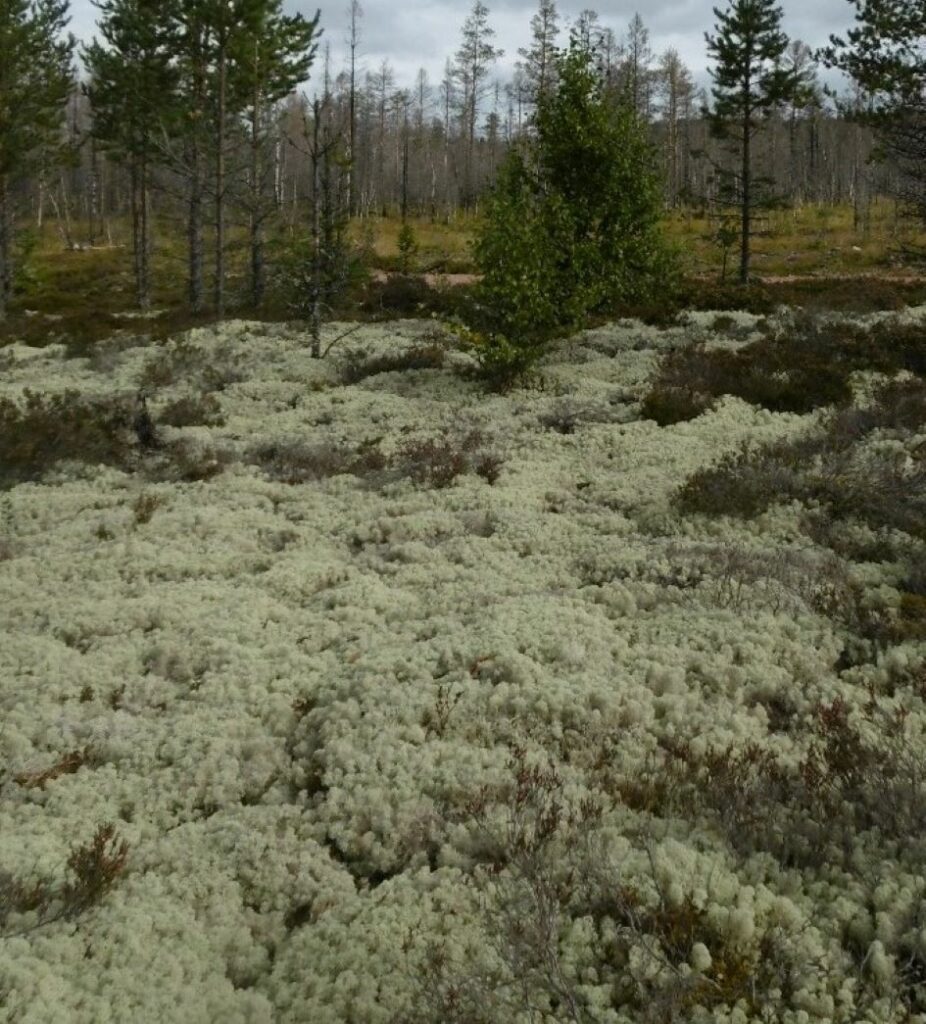
Lichen in Trängslet, Darlana
Written by Andrew Butler.
Symbiosis is central to the landscape connections of the Sami reindeer herders of Northern Scandinavia. Lichen, a symbiotic partnership between a fungus and an alga, is the basis of the Sami herder’s winter domain. The herders track the reindeer across the snow covered landscape as their herd sniff out, then dig down to their winter fodder. Herder, reindeer, lichen, snow. This is a fragile relationship. Warmer early winters are resulting in ice developing over the lichen, making the snow impenetrable. Wild fires are decimating areas of lichen, which will take decades to return. As the range of the reindeers diminishes, so the livelihood and culture of the Sami herders is threatened.
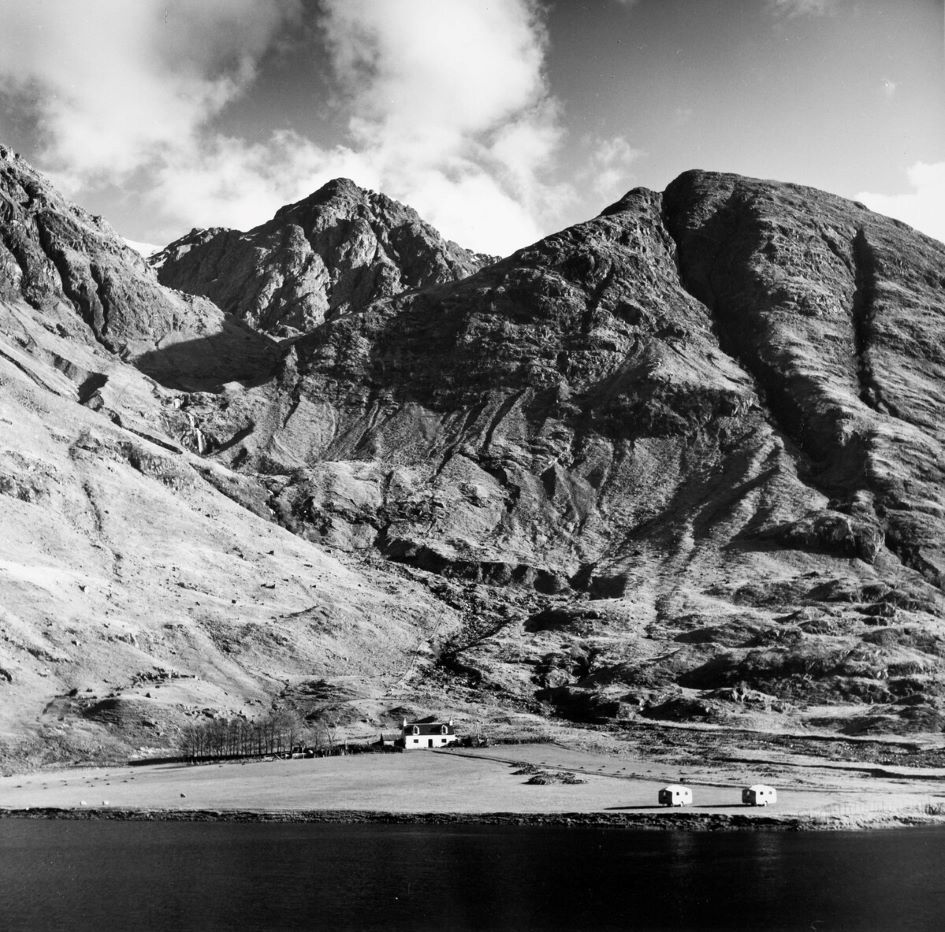
Tarlton’s Scottish landscape
Written by Victoria Stevens.
As a child, this scene was very familiar. My Dad and I used to take our sailing dinghy to Coniston Water to camp. We’d tack the boat down to the town to get supplies and sit in a pub garden in the crook of such hills, Dad with a pint and me with that rarest of treats, a coke with a soggy paper straw. The mountains above were straightforward, more troubling were the slopes disappearing below the surface. I thought of Bluebird and dead bodies every time I swam.
Their ability to terrify remains: Wordsworth’s ‘voluntary power instinct’. These fells have impact still, but adulthood has tempered this into a useful appreciation of one’s own insignificance. Like my memories of being with my Dad, they will last long after the viewer has moved on.
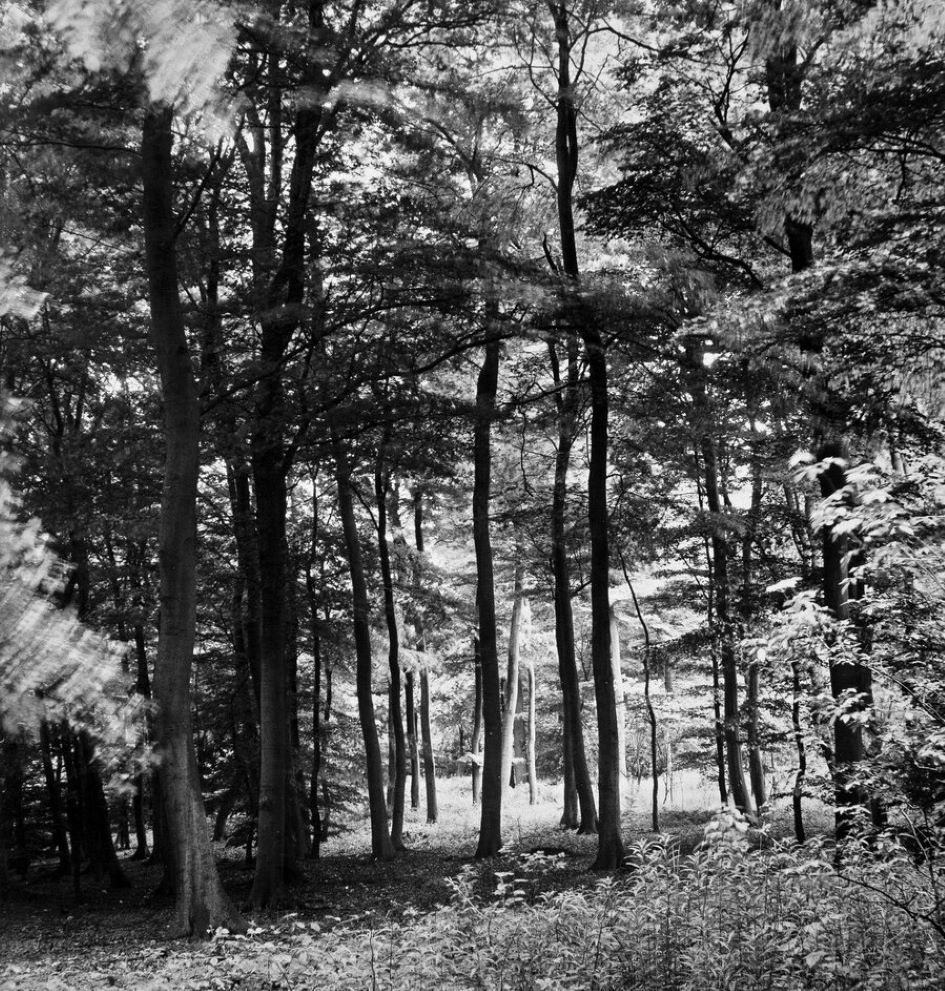
Buckinghamshire woodland
Written by Madeleine Ding.
The wooded landscape reminds me immediately of running through the Chiltern beech woods. Earlier this year in training for a relay race along the Ridgeway I ran through the woods between Wendover and Princes Risborough. It was an early summer evening and I enjoyed the quiet peaceful atmosphere.
As a child we lived opposite a small coppice. It was fun to play in the woods and follow the paths through the trees. We always preferred the path through the trees instead of using the footpath beside the road.
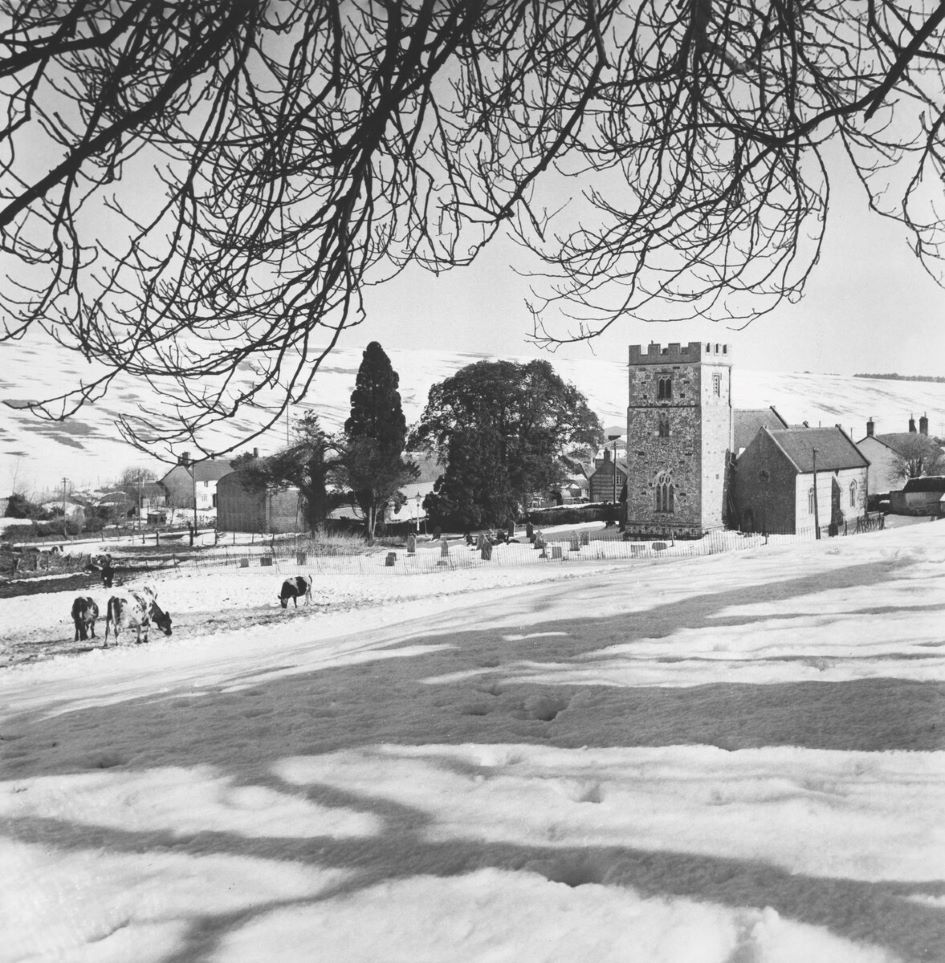
Snow at Winterbourne Houghton
Written by Tim Jerrome.
In my youth, it was not just the sight but the thought of snow that sent an excited tremble through my body. The anticipation of the forecast, the unease of refreshing my school’s webpage for updates, and the thrill of responsibilities abandoned when a snow day was announced. The actual touch of snow never quite lived up to the expectation, but the adrenaline high outshone the frosty discomfort of numb fingers.
Looking at this landscape now, thoughts of pragmatic inconvenience creep into my mind; the dread of driving down an unsalted side road, the annoyance of a cancelled train. But the spark of magic is still there, especially as snow may soon become a thing of historical phenomenon.

Coombe Farm, Bruton
Written by Fiona Melhuish.
This image of Coombe Farm in Bruton in Somerset reminds me of the countryside around the village in South Gloucestershire where I grew up. As a child, walking local footpaths with family and friends, my perception of this landscape was of an enduring permanence, something which would remain the same even as I, and those around me, grew up and moved on in our lives. As an adult, with the persistent threat of the development of green belt land in this area, this sense of permanence now feels less certain and more of an illusion.
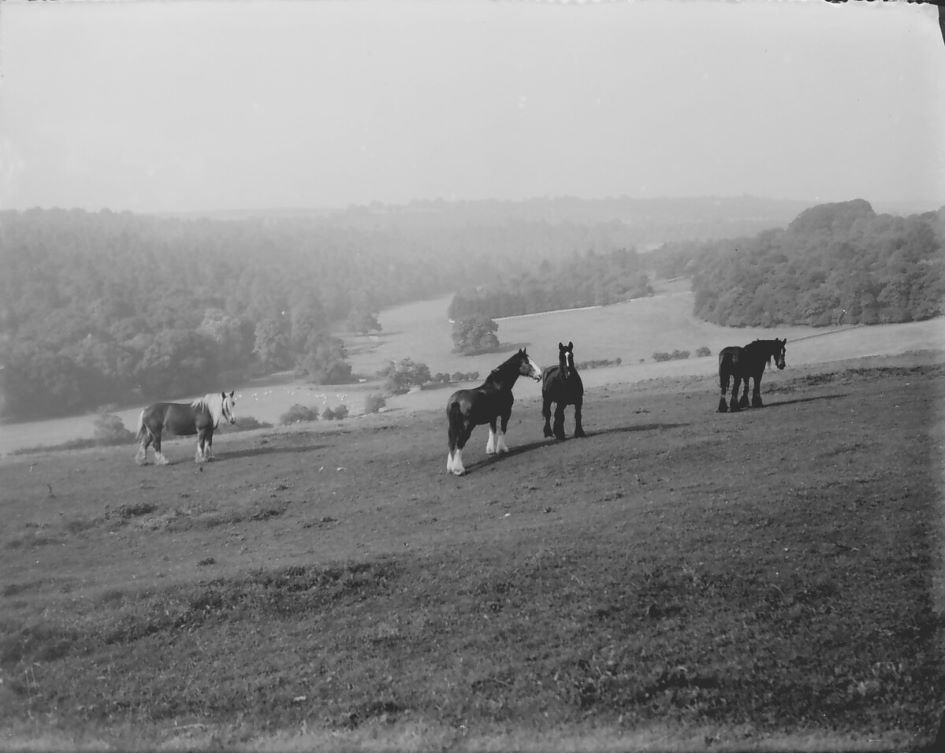
Horses at Fossebridge
Anonymous author.
I grew up in a small village in horse-racing country. There were horses at the bottom of the garden and a stud farm at each end of the village. You got used to tuning out the sound of their hooves on the road. Dodging their droppings required more concentration!

Cliffs at West Bay, Dorset
Written by Nicola Minney.
I have often been dragged up and down these cliffs (and the ones in the distance) on holiday walks only obliging with the promise of an ice cream and a swim in the sea once we got to the end. The walk at the top is made more exciting with cows and golfers hanging about.
These cliffs still look similar in their geology but have been subject to several cliff falls over the past 30 years, with the pathway becoming steeper to the top and the edge drawing ever closer.
I have so many photos of these cliffs because they look incredible in the sunshine, especially at sunset. To me they symbolise the start of my holidays, because on the first evening we go and get our fish and chips (and a milkshake if you’re lucky) and we take a little walk around West Bay, heading to the end of the pier to stand on the edge of the world, looking back at a millennia of rocks and fossils that face the sea.

Changing Landscapes resources and links
Project Twitter account – @ChangingNetwork
Blog piece about the network on the Landscape Decisions Programme website
Historical Pageants project (Paul Readman)
Jeremy Burchardt, Lifescapes: The Experience of Landscape in Britain, 1870-1960 (CUP, 2023)
Paul Readman, Storied Ground: Landscape and the Shaping of English National Identity (CUP, 2018)